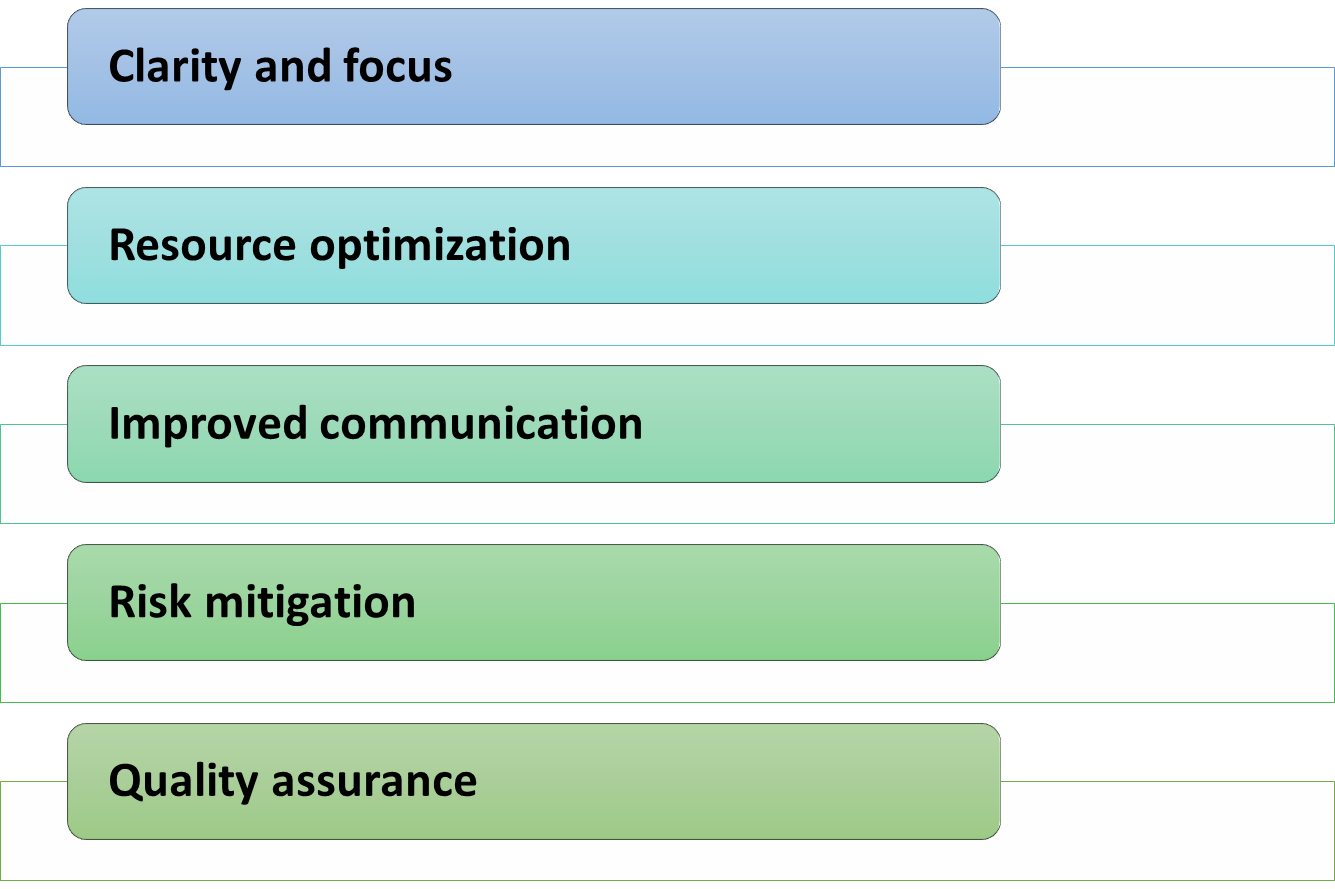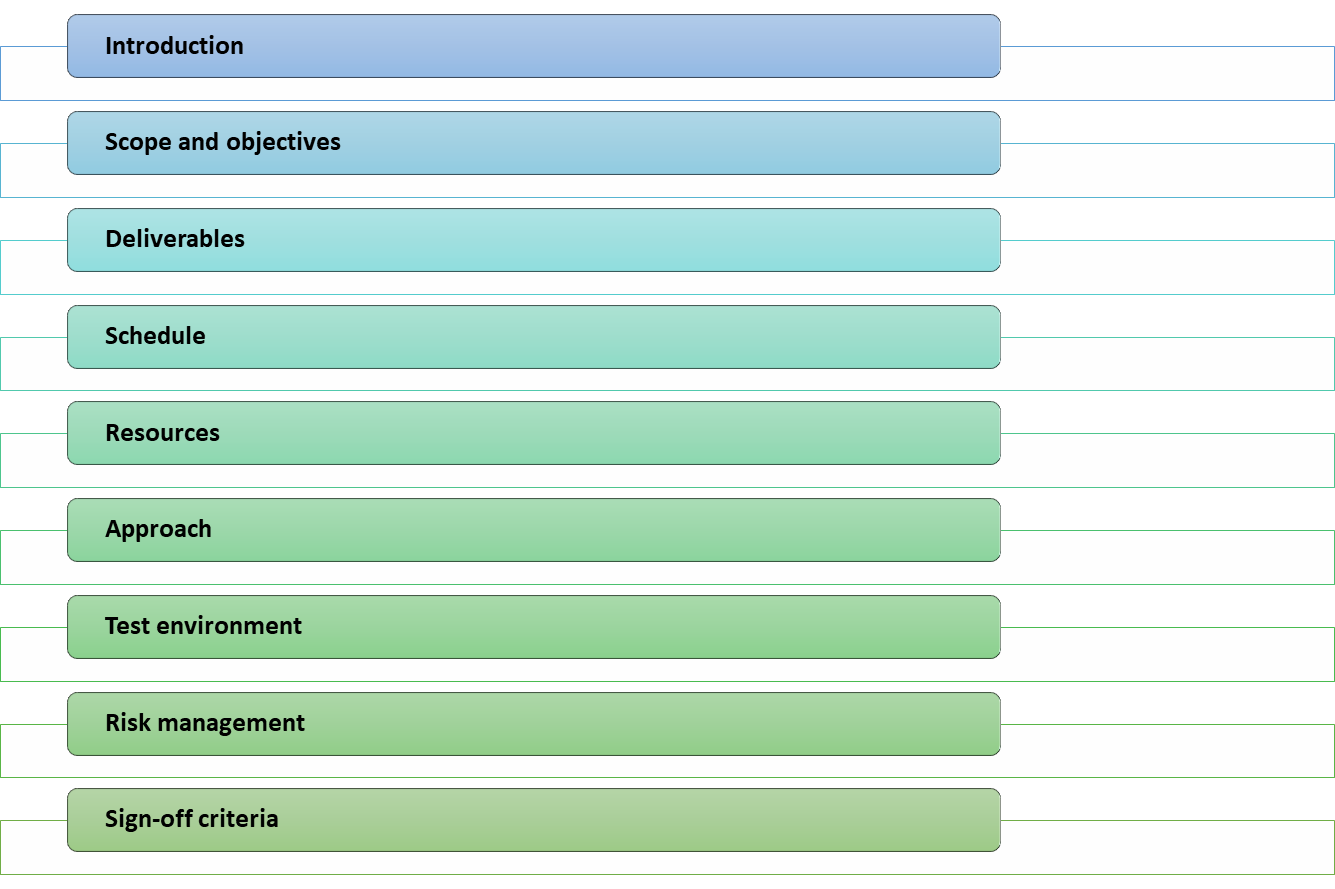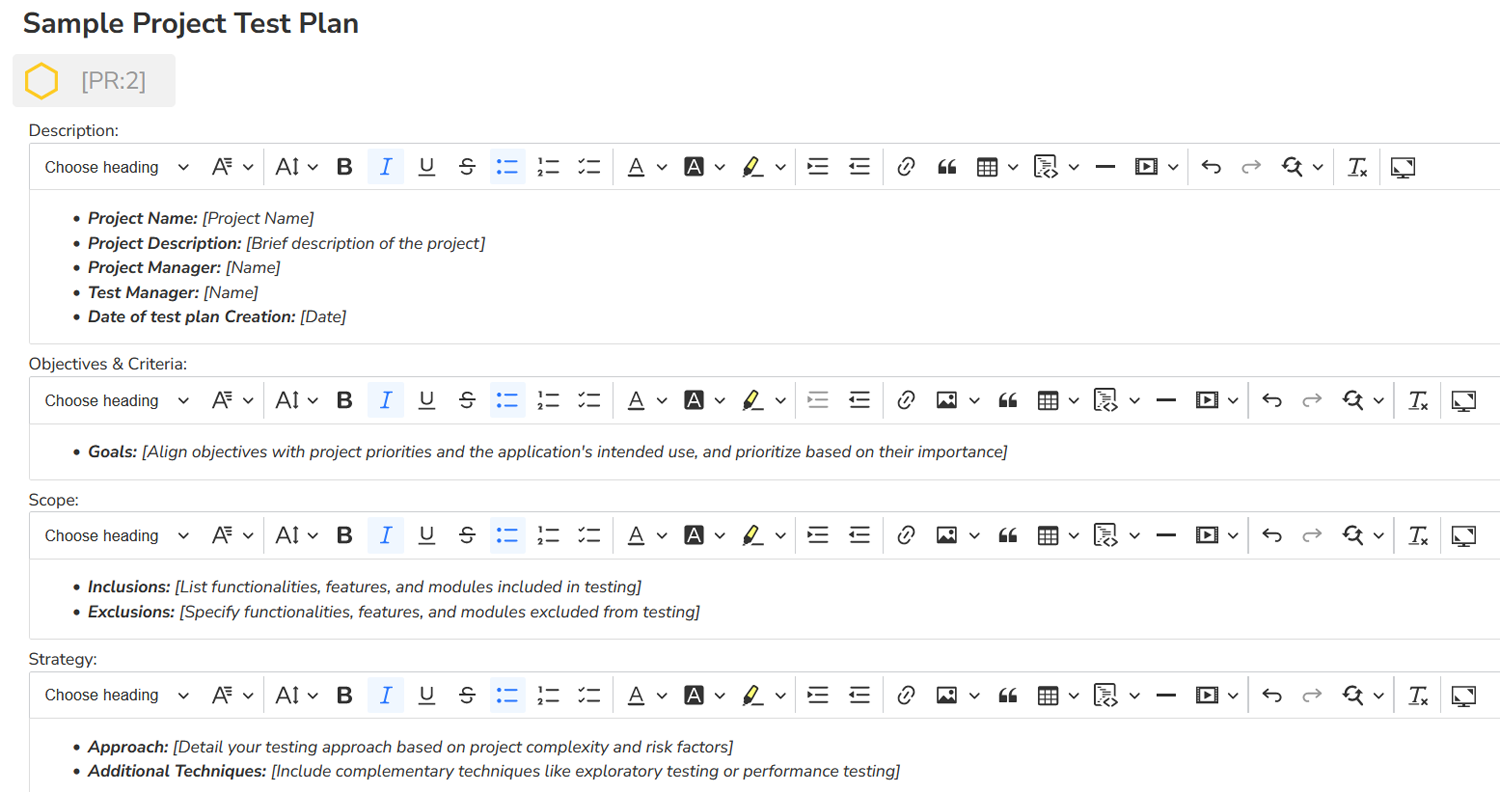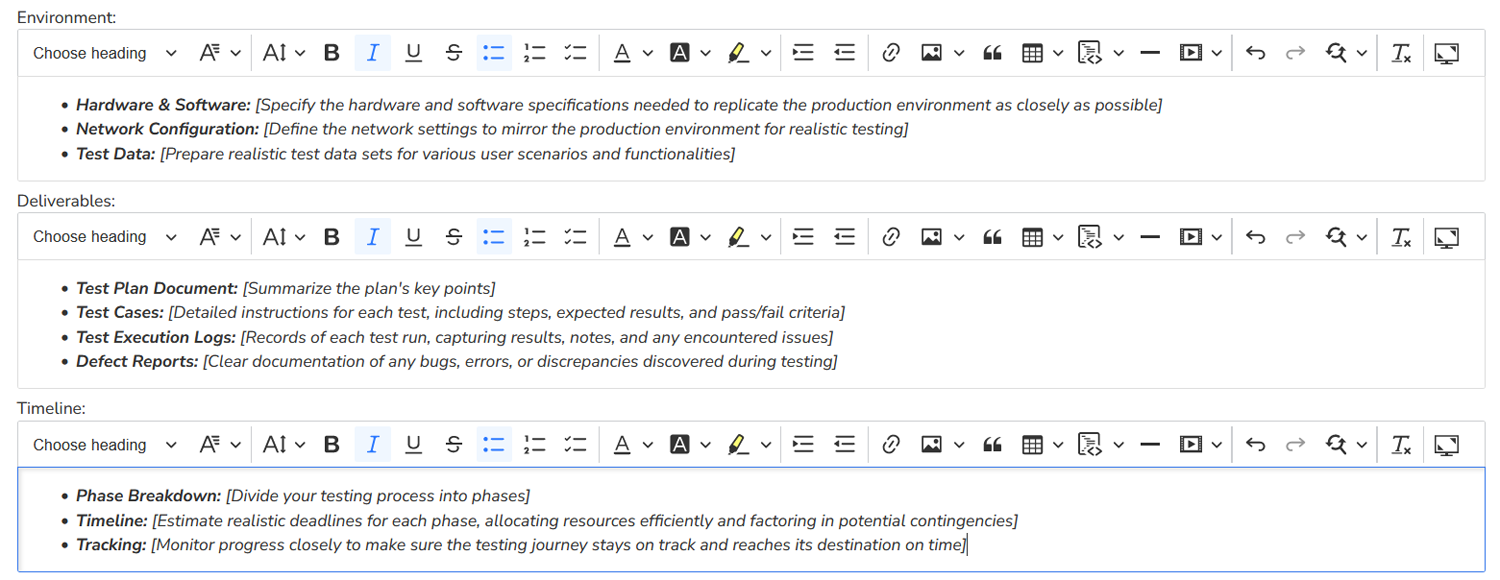What is a Test Plan? Complete Guide to Writing
In the software development landscape, quality can’t be an afterthought — it needs to be baked into the process from the start. A key component of this pursuit of excellence is the test plan. But what exactly is this document, and why should it be your top priority before diving into the testing process? Keep reading to learn more.
What is a Test Plan?
A test plan acts as the master document that organizes the entire testing process, providing a roadmap for quality assurance. It serves as a comprehensive guide, providing a detailed blueprint of how testing activities will unfold. This includes the objectives, methodologies, and criteria that will be used to ensure the software meets the specified requirements and functions. It's important to note that a test plan is not just a laundry list of test cases — it's a thorough document that guides your testing approach towards clear objectives, tying everything together so the entire team is on the same page.
Difference Between a Test Plan vs. Test Strategy
While the terms "test plan" and "test strategy" are often used interchangeably, they serve distinct roles. The test strategy defines the broader aspects and “big picture” of testing, explaining the approach, resources, and schedules at a higher level. The test plan, on the other hand, delves into the specific what, why, and how of testing by outlining the scope, individual goals, necessary resources, and more.
In practice, this is why it’s often recommended to determine the test strategy first, before moving on to complete the test plan. It enables your team to align on a direction before organizing and planning the specifics of how you’ll get there.
Steps to Write a Test Plan
Writing a test plan is more than just ticking boxes. Each step, from defining the scope to scheduling timelines, requires careful consideration because of their impact on testing quality and efficiency. Let's delve into the essential steps of building a test plan:
1. Determine Scope
Before getting into the weeds of a test plan, it's critical to start by clearly defining the scope. Identify the specific software components, features, and functionalities that will be included, as well as those that will be excluded from the testing process. This keeps testing efforts focused and aligned with project goals, avoiding unnecessary deviations. Be clear, concise, and leave no room for ambiguity (both with pieces that are included in scope, and those that are excluded from scope).
In addition to specifying the scope, constraints need to be considered as well. Think about time, budget, and resource limitations that might impact the testing scope. A realistic assessment of constraints at this stage is imperative for setting achievable testing goals and managing expectations.
2. Define Objectives & Criteria
In the next step, testing goals are clearly established to coordinate with the overall project targets. Doing this ensures compliance with requirements, evaluates what “success” means, and verifies alignment with overall project goals.
Objectives
Defining objectives is the cornerstone of a well-crafted test plan. Articulate what you aim to achieve through testing, whether it's validating specific functionalities, compliance with requirements, or uncovering potential defects. This sets the overarching purpose for the entire testing effort. However, not all objectives hold equal weight, so prioritize them based on their importance and potential impact.
Examples of common objectives include:
- Having core functionalities work without issue
- Validating security measures
- Assessing performance bottlenecks
- Uncovering usability issues
Criteria
Next up, outlining acceptance criteria establishes measurable benchmarks to track. Think of them as checkpoints, defining pass/fail conditions for every test. Clearly detail the metrics and standards that must be met for the software to be considered ready for release. For example, all login attempts with valid credentials must succeed within 3 seconds, database queries must execute within defined resource constraints, and specific user journeys must be completed without encountering errors.
3. Design the Strategy
Now it’s time to select an appropriate testing methodology based on the project requirements. Whether it's manual testing, automated testing, or a combination, choose the approach that best suits the project's needs. Make sure to specify the testing levels (unit, integration, system, acceptance) and types (functional vs. non-functional) that will be employed as well.
If you're focusing on user experience, black-box testing might be the preferred option. For code-centric analysis, white-box testing may be more helpful. However, remember that the best strategy is often a hybrid approach. Explore complementary techniques like exploratory testing for uncovering unforeseen issues, and performance testing for assessing software stability under load. Be adaptable and don't hesitate to adjust your approach as the testing process unfolds and new information emerges.
4. Plan the Environment
A test environment is a controlled setup where testing activities can take place. It replicates the production environment for accurate testing conditions, but without causing real-world disruptions. Make sure to define the key elements like hardware, software, network configurations, and test data that simulate actual usage scenarios.
Matching the hardware and software specifications to the production environment as closely as possible is vital for an effective test environment. Set up the network settings to replicate the production environment's network, so you know that your software will behave as expected when deployed in the real world. Next, populate your environment with realistic test data for various user scenarios and functionalities. Then, implement robust access control measures to protect sensitive data and prevent unauthorized access. Security breaches in the test environment can have real-world consequences.
5. Determine Deliverables
The deliverable planning stage is a pivotal aspect of the test planning process, and involves outlining key items at different stages of the testing lifecycle — before, during, and after testing. This means coverage of preparatory work, ongoing work, and post-testing work. A structured approach to this step ensures a well-documented testing process, offering valuable insights and learnings for future testing.
Before Testing
Specify the preparatory deliverables, including test plans, test cases, and any prerequisite documentation. Confirm that everything is in place before testing begins.
During Testing
Specify the ongoing deliverables, such as test execution reports, defect logs, and progress updates. Keep communication channels open to address issues as they arise.
After Testing
Specify the post-testing deliverables, such as comprehensive test summaries, defect resolution reports, and recommendations for future improvements, and summarize the overall testing outcome.
6. Schedule Timelines
The last major step of creating a test plan, divide the testing process into distinct phases and set realistic timelines and milestones for each. This creates a structured and systematic approach where you can incorporate buffer times to account for unexpected delays and plan for contingencies to address unforeseen issues that may arise during testing.
You can create a test plan template either as a simple document or use a test management tool to generate it:
See our free Test Plan Excel and PDF Templates here.
Characteristics of an Effective Test Plan
So now we know how to write a test plan and what’s included, but what are some considerations through the creation process that could make or break a successful plan? Strong test plans share several key attributes that contribute to their effectiveness:
- Completeness: Encompasses all necessary components (including scope, objectives, strategy, environment setup, deliverables, and timelines) and addresses both functional and non-functional aspects of testing to provide a comprehensive view.
- Accuracy: Ensures that all information (including objectives, criteria, and timelines) is accurate and up-to-date, and incorporates validation mechanisms to verify the correctness of test cases and expected outcomes.
- Conciseness: Clearly articulates the included information, avoiding unnecessary complexity and communicating information in a concise manner.
- Readability: Utilizes simple terms, avoids jargon to enhance understanding, and uses a well-organized structure with headings, subheadings, and bullet points for easy navigation.
- Adaptability to Change: Recognizes the dynamic nature of software development and has built-in flexibility to adapt to shifting scopes, objectives, and even the software itself.
- Traceability: Establishes traceability between requirements, test cases, and test results, enables stakeholders to understand the coverage, and verifies that each requirement has corresponding test cases.
- Realistic Timelines: Sets achievable timelines for each phase of testing, and includes buffer times and contingency plans to account for unexpected delays and challenges.
- Stakeholder Involvement: Encourages collaboration by clearly defining roles and responsibilities for team members, and involves stakeholders in the review and approval process for ongoing alignment with project goals.
- Risk Management: Identifies potential risks, outlines strategies for risk mitigation, and includes contingency plans to address unforeseen issues that may impact the testing process.
- Version Control: Implements version control to track changes made to the test plan over time, and makes sure that stakeholders are working with the most recent and relevant version.
- Accessibility: Keeps the test plan easily accessible to all relevant team members and stakeholders, and utilizes a centralized repository or document-sharing platform for collaborative access.
The Importance of a Test Management Tool
It’s nearly impossible for humans — no matter how organized — to stay on top of every aspect and step. This is why the importance of a supporting test management tool can’t be overstated. These platforms serve as a centralized information repository for all test-related documentation, including the test plan, providing easy access to team members and stakeholders. Test management tools also have powerful capabilities to streamline the documentation process, as well as distill insights from vast amounts of data for better decision-making.
Most modern test management tools also feature version control, so that the most up-to-date version is utilized, reducing the risk of confusion. They can enhance traceability between requirements, test cases, and test results, offering visibility into the testing process and aiding alignment with project objectives. Further integration with automation tools streamlines test execution and result reporting, speeding up repetitive tasks and reducing manual effort.
For more information, see our guide to the Best Test Management Tools in 2025
Upgrade Your Test Plans & Management for a Modern Development Cycle
For modern software development, quality engineering, and customer satisfaction, the industry-leading solution for test management is SpiraTest. With all of the functionality we’ve discussed above and more, it combines powerful organization, collaboration, and tracking features with a user-friendly interface that can even be used in a web browser. On top of that, it seamlessly integrates with automated testing tools to improve your test efficiency, requirement management systems for easy traceability, and a variety of other tools your team may be attached to and don’t want to get rid of.
Get started with a 30-day free trial of SpiraTest and see why our partners love our software and award-winning service team!








